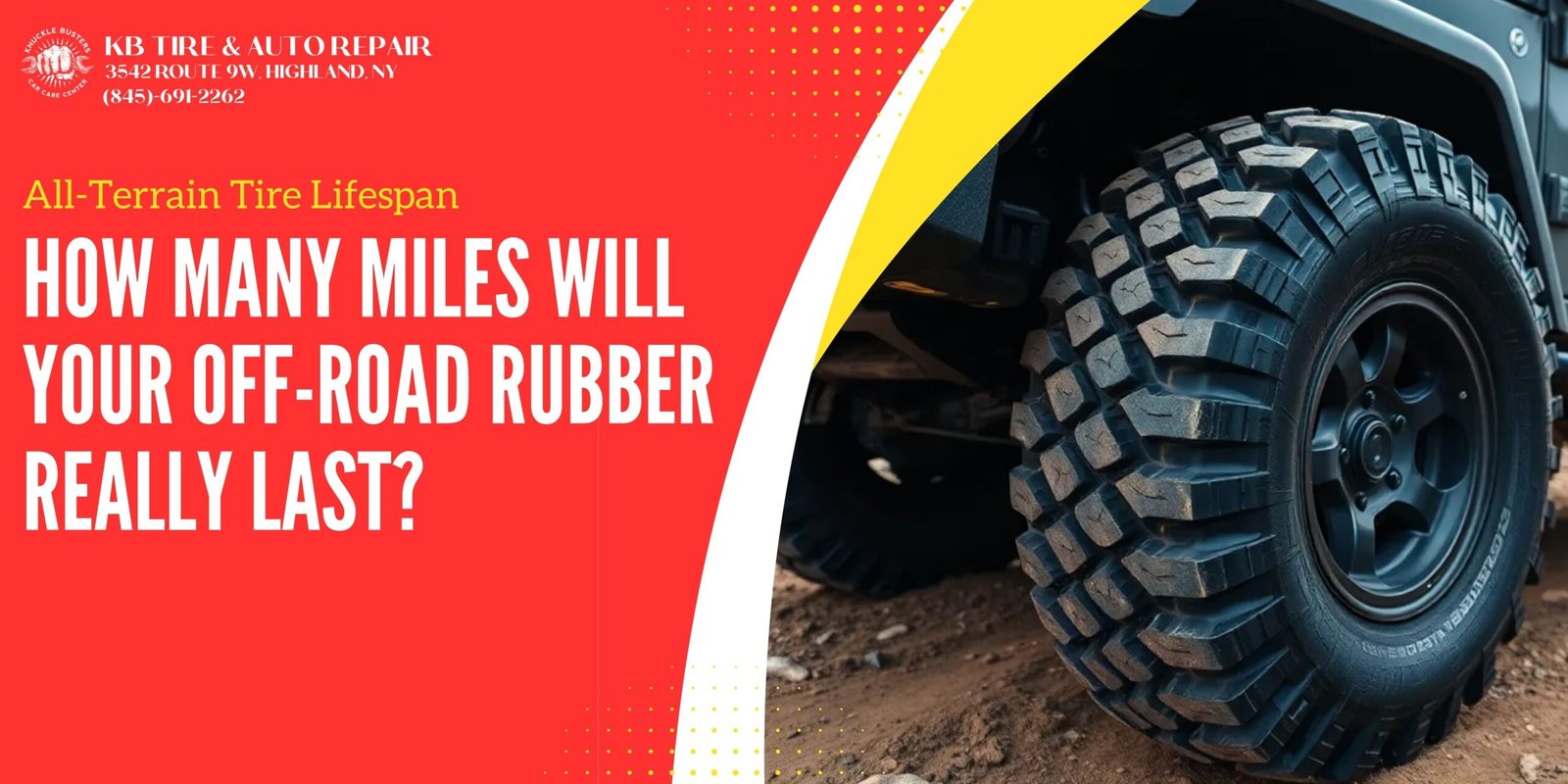Wondering how long your all-terrain tires will keep you conquering those off-road adventures? It’s a question that haunts every outdoor enthusiast looking to maximize their investment while ensuring safety on diverse terrains.
The lifespan of all-terrain tires varies significantly based on several crucial factors that you might be overlooking. From driving habits to maintenance routines, understanding what affects your tire’s longevity can save you hundreds of dollars and prevent unexpected breakdowns when you’re miles from civilization. While the average all-terrain tire lasts between 40,000 to 65,000 miles, your specific situation might yield very different results.
Understanding All-Terrain Tires
All-terrain tires serve as the perfect middle ground between highway tires and aggressive off-road options, offering versatility for drivers who frequently transition between pavement and trails. These specialized tires combine durability with performance characteristics that influence their overall lifespan of 40,000 to 65,000 miles.
What Makes All-Terrain Tires Different
All-terrain tires feature distinctive design elements that set them apart from standard highway tires. Their aggressive tread patterns include larger lugs with wide spacing that provide superior traction on loose surfaces like mud, gravel, and sand. The sidewalls contain reinforced rubber compounds and often display rugged styling with raised lettering and protective ribs. These tires incorporate specialized rubber formulations that balance on-road comfort with off-road durability, though this versatility creates inherent tradeoffs affecting how long all-terrain tires last. The stiffer construction and all-weather capability make them ideal for outdoor enthusiasts who don’t want to sacrifice highway performance for occasional off-road adventures.
Common All-Terrain Tire Construction
The construction of all-terrain tires directly impacts their longevity and performance capabilities. Most feature a three-ply or multi-ply polyester carcass that provides puncture resistance without excessive weight. The tread consists of specialized rubber compounds containing silica for improved wet traction and carbon black for increased durability. Manufacturers incorporate reinforced sidewalls with cut-and-chip resistant materials to prevent damage during off-road excursions. The tread blocks typically include stone ejectors—small raised bars between lugs that prevent rocks from becoming embedded and causing premature wear. Many all-terrain models also feature staggered shoulder blocks that enhance off-road traction while reducing road noise on highways. This robust construction contributes to the typical 40,000-65,000 mile lifespan, though actual longevity varies based on usage conditions and maintenance practices.
Average Lifespan of All-Terrain Tires
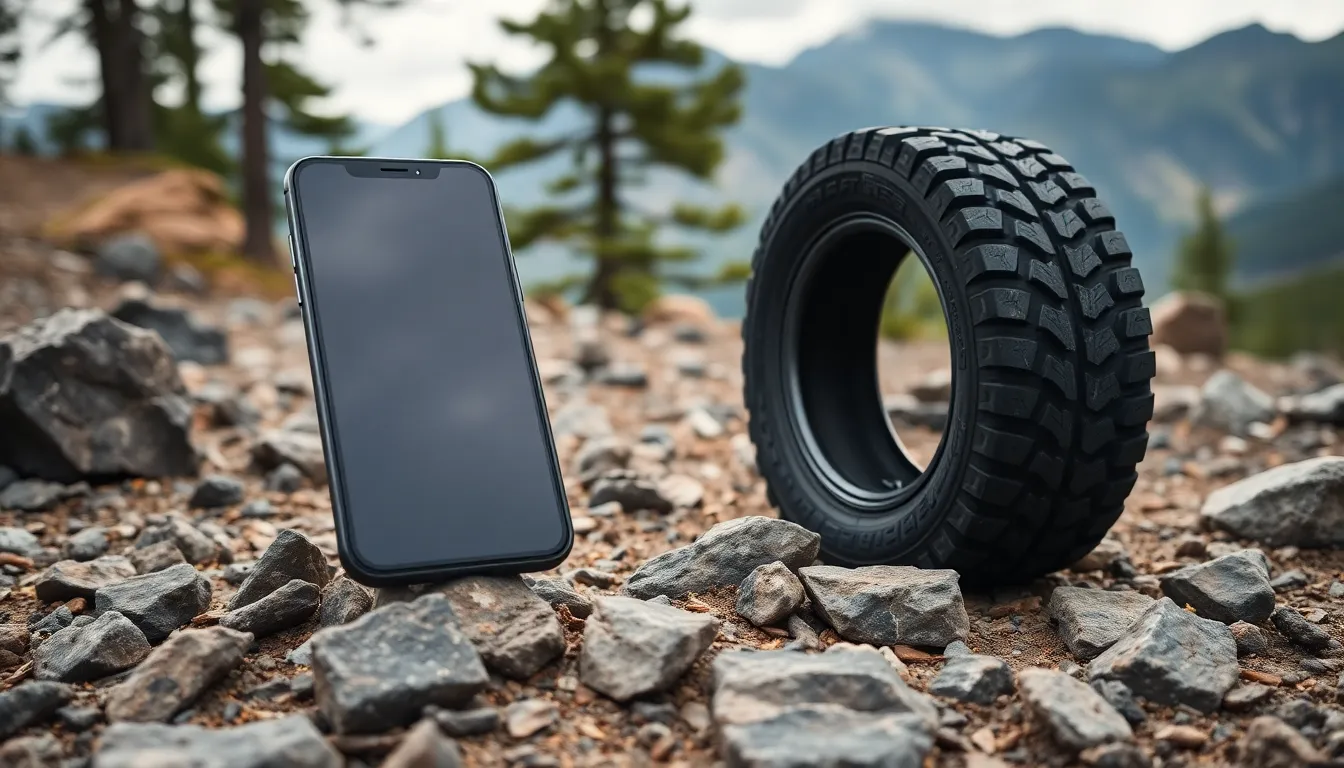
| Brand | Model | Average Mileage Warranty |
|---|---|---|
| BFGoodrich | All-Terrain T/A KO2 | 50,000 miles |
| Goodyear | Wrangler All-Terrain Adventure | 60,000 miles |
| Michelin | LTX A/T2 | 60,000 miles |
| Cooper | Discoverer AT3 4S | 65,000 miles |
| Falken | Wildpeak A/T3W | 55,000 miles |
| Toyo | Open Country A/T III | 65,000 miles |
Premium brands like BFGoodrich KO2s commonly deliver 50,000+ miles of service when properly maintained. Cooper’s Discoverer AT3 series often reaches the higher end of the spectrum at 65,000 miles. Nitto Terra Grapplers typically provide 50,000-55,000 miles of use, while budget-friendly options might offer 40,000-45,000 miles before requiring replacement.
Real-world performance frequently varies from these advertised figures based on your specific driving patterns. Many owners report exceeding these warranties with proper rotation schedules and careful driving habits.
Why All-Terrain Tires Wear Differently Than Highway Tires
All-terrain tires experience different wear patterns than standard highway tires for several key reasons:
- Aggressive tread design: The deeper, more substantial tread blocks on all-terrain tires generate increased heat and friction, accelerating wear compared to the smoother patterns of highway tires.
- Softer rubber compounds: All-terrain tires often use softer rubber compounds to enhance off-road grip, sacrificing some longevity compared to the harder compounds in highway tires.
- Weight penalty: The reinforced construction adds 2-4 pounds per tire, increasing rolling resistance and fuel consumption while creating more heat during operation.
- Tread block movement: The independent tread blocks designed for off-road traction experience more movement and flexing on pavement, causing faster wear along the edges.
- Heat buildup: Off-road driving generates significantly more heat in tire compounds, particularly when running at lower pressures for improved traction.
The specialized design elements that make all-terrain tires exceptional for mixed-use driving are the same features that affect their longevity. Unlike highway tires that might last 70,000-80,000 miles, all-terrain options typically deliver 20-30% less mileage due to these performance-oriented design compromises.
Factors That Affect All-Terrain Tire Longevity
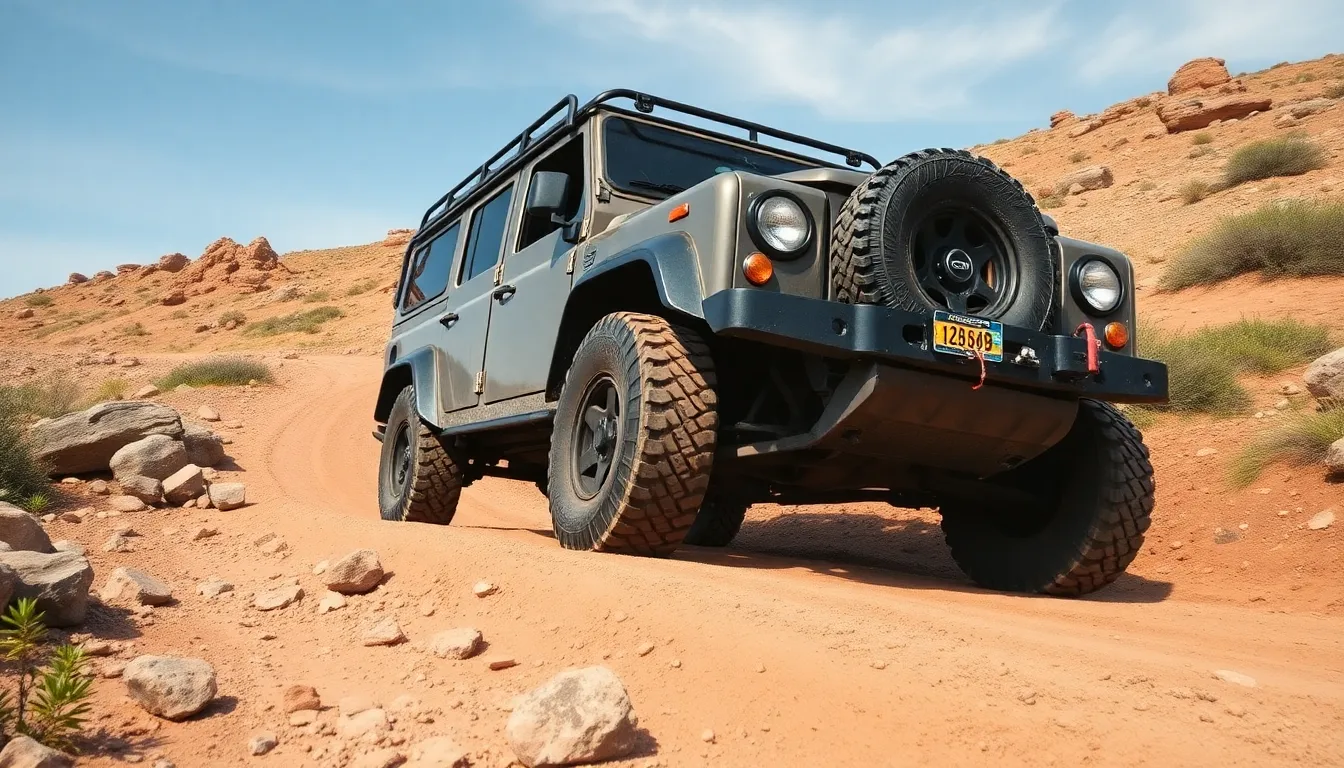
All-terrain tire lifespan varies significantly based on several key variables that directly impact wear patterns and durability. Understanding these factors helps you predict how long your all-terrain tires will last and take steps to maximize their useful life.
Driving Habits and Conditions
Your driving style dramatically influences all-terrain tire longevity. Aggressive acceleration, hard braking, and taking corners at high speeds create excessive friction that accelerates tread wear by up to 30%. Driving consistently at speeds over 65 mph generates more heat in the tire compound, breaking down rubber molecules faster and reducing overall tire life.
Weather conditions also play a crucial role. Extended driving on hot pavement increases tire temperature, accelerating wear rates. Conversely, extremely cold temperatures can harden rubber compounds, increasing the risk of cuts and chips when encountering obstacles. Road conditions matter too—rough, unpaved surfaces with sharp rocks, roots, and uneven terrain cause significantly more wear than smooth highways.
Terrain Types and Their Impact
Different terrains wear all-terrain tires at varying rates:
- Highway Driving: Provides the longest lifespan for all-terrain tires, potentially reaching the full 40,000-65,000 mile range with consistent, moderate speeds
- Gravel Roads: Accelerate wear by approximately 15-20% compared to highway driving due to loose surface materials
- Rocky Terrain: Creates significant sidewall damage risks and can reduce overall tire life by 25-35%
- Mud and Clay: Lead to rapid tread wear from the tires constantly searching for traction
- Sand: Causes heat buildup from increased rolling resistance, potentially reducing tire life by 10-15%
Frequent transitions between these terrain types cause more stress on the tire structure than consistently driving on a single surface type, shortening how long your all-terrain tires last.
Vehicle Weight and Load Considerations
Your vehicle’s weight directly affects tire durability. Heavier vehicles place more pressure on tires, increasing friction between the rubber and road surface. Each additional 250 pounds beyond manufacturer recommendations reduces tire life by approximately 5-10%.
| Vehicle Type | Average Tire Lifespan Reduction |
|---|---|
| Light SUVs | 0% (baseline) |
| Mid-size SUVs | 10-15% |
| Heavy Trucks | 20-30% |
| Loaded 4x4s | 25-35% |
Payload distribution affects wear patterns as well. Uneven loads create unbalanced pressure points, causing certain sections of the tire to wear faster than others. Consistently overloading your vehicle beyond its Gross Vehicle Weight Rating (GVWR) dramatically shortens tire life expectancy, sometimes by up to 40% in extreme cases.
Tire inflation levels must match the increased load. For every 10% a tire is underinflated, expect approximately 10-15% reduction in tread life due to increased sidewall flexing and heat generation.
Maintenance Practices to Extend Tire Life
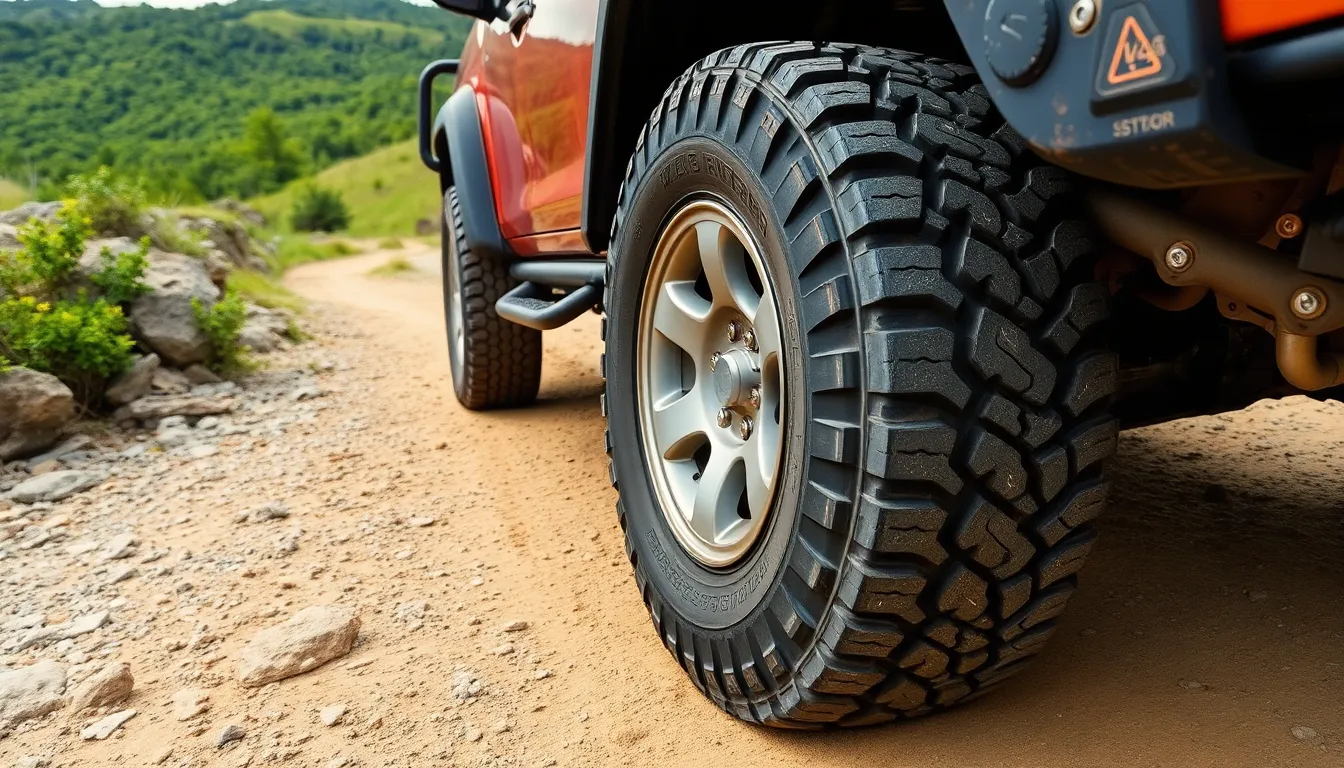
Implementing proper maintenance routines significantly increases how long all terrain tires last, often adding 5,000-10,000 miles to their lifespan. These practices protect your investment and ensure optimal performance throughout the tire’s life cycle.
Proper Rotation and Alignment
Rotating your all terrain tires every 5,000-8,000 miles equalizes tread wear and extends overall lifespan by up to 20%. Front tires typically experience different wear patterns than rear tires, especially on four-wheel or all-wheel drive vehicles. Follow a cross-rotation pattern—moving front tires to opposite rear positions and rear tires to opposite front positions—for most all terrain applications.
Regular alignment checks prevent uneven tire wear that can reduce lifespan by 30% or more. Signs of misalignment include uneven tread wear, vehicle pulling to one side, or a crooked steering wheel. Schedule alignment inspections after hitting large obstacles during off-road excursions or at least twice yearly for vehicles frequently used on rough terrain.
Tire Pressure Management
Maintaining proper tire pressure directly impacts how long all terrain tires last, with incorrect pressure reducing lifespan by up to 25%. Underinflated tires flex excessively, generating heat that accelerates tread wear and increases risk of sidewall damage. Overinflated tires reduce contact patch size, creating uneven center wear and compromising traction.
Check pressure monthly and before long trips or off-road excursions. For all terrain applications:
- Reduce pressure by 3-5 PSI when driving on loose surfaces like sand or mud
- Return to manufacturer-recommended pressure for highway driving
- Adjust pressure based on load (carrying heavy equipment requires higher PSI)
- Account for temperature changes (pressure drops approximately 1 PSI for every 10°F decrease)
Seasonal Considerations
Adapting maintenance routines to seasonal changes extends all terrain tire life considerably. During summer months, heat buildup accelerates wear—inspect tires more frequently and maintain slightly higher pressures (1-2 PSI above standard) to compensate for natural pressure increases in hot weather.
Winter conditions pose unique challenges for all terrain tires. Salt and road chemicals accelerate rubber degradation while extreme cold can reduce tire flexibility. Rinse tires regularly during winter months to remove corrosive substances, and allow extra warm-up time before aggressive driving when temperatures drop below freezing.
Storage practices matter for seasonal tire sets. Store unmounted tires in cool, dry locations away from direct sunlight, ozone sources (electric motors, furnaces), and petroleum products. Position tires upright rather than stacked or hanging to prevent deformation that compromises performance and lifespan.
Signs It’s Time to Replace Your All-Terrain Tires
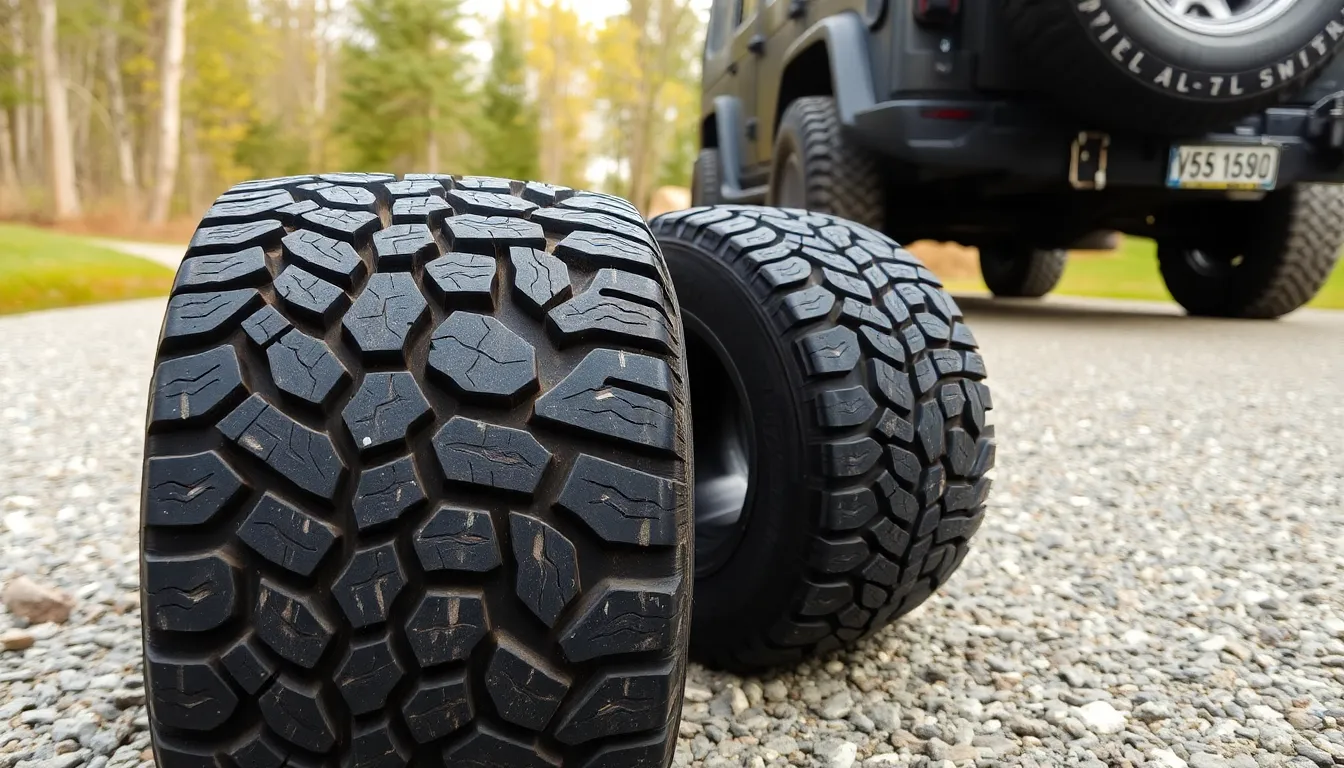
Even with proper maintenance, all-terrain tires eventually require replacement. Recognizing when your tires have reached the end of their useful life is crucial for maintaining vehicle safety and performance, especially if you’re wondering how long your all-terrain tires will last beyond their expected 40,000-65,000 mile range.
Tread Wear Indicators
All-terrain tires come equipped with built-in tread wear indicators that signal when replacement is necessary. These indicators appear as small raised bars running perpendicular to the tread pattern at a depth of 2/32 inch. When your tire tread wears down to match these indicators, your tires have reached the legal minimum and require immediate replacement.
You can also perform the penny test by inserting a penny into the tread groove with Lincoln’s head upside down and facing you. If you can see all of Lincoln’s head, your tread is worn below 2/32 inch and it’s time for new tires. For all-terrain applications, many experts recommend replacement at 4/32 inch of remaining tread for better off-road capability.
Uneven tread wear patterns indicate specific issues:
- Center wear: Overinflation
- Edge wear: Underinflation
- Scalloped patterns: Misalignment or suspension problems
- One-sided wear: Camber or toe adjustment needed
Performance Decline Symptoms
Your all-terrain tires exhibit noticeable performance changes as they approach the end of their lifespan. Decreased traction is the most common symptom, especially evident during off-road driving or wet conditions. Tires that once gripped confidently through mud or gravel begin slipping more frequently, indicating worn tread blocks.
Increased road noise serves as another warning sign. While all-terrain tires naturally produce more noise than highway tires, a significant increase in volume or changes in sound pattern suggest deteriorating tread. Many drivers report a distinctive humming or droning sound developing in aging all-terrain tires.
Additional performance decline indicators include:
- Longer stopping distances on wet roads
- Vehicle pulling to one side during braking
- Vibrations at highway speeds
- Decreased fuel efficiency (up to 3% lower mpg)
- Reduced comfort over rough terrain
- Visible cracking or bulging on sidewalls
- Frequent air pressure loss
If you experience these symptoms before reaching the expected 40,000-65,000 mile lifespan of your all-terrain tires, have them professionally inspected to determine if early replacement is necessary for optimal safety and performance.
Conclusion
Your all-terrain tires are a significant investment that balances off-road capability with on-road performance. While the typical 40,000 to 65,000-mile lifespan falls short of highway tires your vigilant maintenance can push that boundary further.
Pay attention to rotation schedules maintain proper inflation and adjust driving habits according to terrain. These simple practices can add thousands of miles to your tire life and enhance your driving safety.
Remember that tire wear signals aren’t just about saving money—they’re crucial safety indicators. By recognizing when it’s time for replacement and understanding how your specific driving conditions affect longevity you’ll maximize both performance and value from your all-terrain tires.
Frequently Asked Questions
How long do all-terrain tires typically last?
All-terrain tires typically last between 40,000 to 65,000 miles, depending on the brand, driving habits, and maintenance. Premium brands like BFGoodrich and Michelin often come with 50,000 to 60,000-mile warranties, while budget options may last 40,000 to 45,000 miles. With proper care and maintenance, tires can sometimes exceed their warranty mileage.
Why do all-terrain tires wear faster than highway tires?
All-terrain tires wear faster than highway tires due to their aggressive tread design, softer rubber compounds, and increased heat buildup during off-road driving. These design elements enhance off-road performance but result in 20-30% less mileage compared to highway tires, which can last 70,000-80,000 miles.
How do driving habits affect all-terrain tire lifespan?
Driving habits significantly impact tire life. Aggressive acceleration, hard braking, and high speeds can accelerate tread wear. Different terrains affect wear differently—rocky surfaces cause more abrasion than smoother trails. Vehicle weight and load distribution also matter, as heavier vehicles and uneven loads increase strain on tires, reducing their lifespan.
How often should I rotate my all-terrain tires?
You should rotate all-terrain tires every 5,000-8,000 miles to ensure even wear. Regular rotation helps extend tire life by 5,000-10,000 miles by distributing wear patterns evenly across all four tires. Additionally, check wheel alignment regularly, especially after driving on rough terrain, to prevent uneven tread wear.
What’s the importance of proper tire pressure for all-terrain tires?
Proper tire pressure is crucial for maximizing all-terrain tire life. Incorrect pressure can reduce lifespan by up to 25%. Underinflation causes excessive sidewall flexing and heat buildup, while overinflation leads to center tread wear. Check pressure monthly and adjust according to driving conditions and seasonal temperature changes.
How can I tell when it’s time to replace my all-terrain tires?
It’s time to replace your all-terrain tires when: tread wear indicators become visible; tread depth is less than 4/32 inch (use the penny test); you notice uneven wear patterns; or you experience decreased traction, increased road noise, longer stopping distances, or visible sidewall damage. These signs indicate compromised safety and performance.
Do seasonal changes affect all-terrain tire performance?
Yes, seasonal changes significantly affect all-terrain tire performance and longevity. Inspect tires more frequently during summer as heat accelerates wear. In winter, rinse tires regularly to remove road salt and corrosive substances. For seasonal tire sets, store them properly—clean, inflated to 10 PSI, in a cool, dry place away from direct sunlight to prevent degradation.
Are premium all-terrain tire brands worth the extra cost?
Premium all-terrain tire brands are generally worth the extra cost for drivers who frequently travel off-road or need maximum reliability. They typically offer 10,000-15,000 more miles of use, better traction in diverse conditions, and superior durability. The higher initial investment often pays off through longer service life and better performance in challenging situations.
